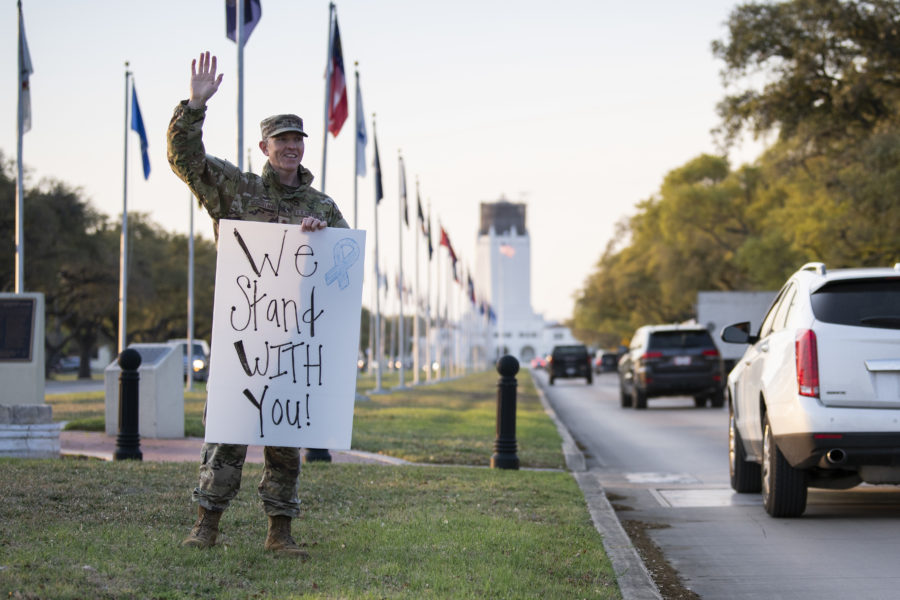Defense Secretary Lloyd J. Austin III released the findings of a 20-base review of sexual assault prevention and response practices within days of a congressional report that found additional focus needed on prevention along with “continued congressional oversight.”
The Government Accountability Office published its latest recommendations March 24 in the report, “Sexual Assault in the Military: Continued Congressional Oversight and Additional DOD Focus on Prevention Could Aid DOD’s Efforts.”
Meanwhile, the Pentagon’s “2021 On-Site Installation Evaluation Report,” posted online March 31, represents a new way ahead for the department.
GAO’s Findings
The GAO acknowledged that “DOD has taken a number of steps to address sexual assault” but found areas where it was lacking, including that its activities focused largely on response rather than prevention.
DOD could improve prevention by working on its prevention strategy, improving how it measures the effectiveness of prevention efforts, and doing long-term strategic planning, the GAO found. It said DOD could better protect male service members and civilian employees who are victims, finding that “DOD was not tracking all reported work-related sexual assaults involving civilian employees.”
The watchdog measured how the department had complied with 249 sexual assault-related statutory requirements enacted by Congress from 2004 to 2019 as well as with 30 prior GAO recommendations, finding that “DOD has made progress in addressing some of the recommendations, but sustained leadership is needed to ensure that the remainder of these recommendations are addressed.” Of the 249 statutory requirements, 191 were still in force as of the enactment of the 2019 National Defense Authorization Act.
DOD’s Findings
In a March 30 memo by Austin that accompanied the Pentagon’s base-by-base report, he said he’d made “countering the scourge of sexual assault in the military a key priority” since taking office.
The assessments undertaken for the 2021 On-Site Evaluation Report built on the findings of the Independent Review Commission on Sexual Assault in the Military. The commission called for “broad policy compliance checks, the assessment and development of prevention capabilities at each installation, … and site visits to a representative sample of military installations,” according to the memo.
The Pentagon report of installations said the DOD had made “steady progress in addressing sexual assault in the military” for a decade but still found “persistent challenges across areas of violence and climate throughout the force.”
Part of the report’s purpose was to hammer out a process for doing on-site evaluations in the future, and it recommends institutionalizing the process. Austin’s memo further sets forth that the evaluations should take place every two years.
Out of the 20 installations evaluated, four belong to the Department of the Air Force: Dyess Air Force Base, Texas; Laughlin Air Force Base, Texas; Joint Base Elmendorf-Richardson, Alaska; and Vandenberg Space Force Base, Calif. The on-site evaluations took place from November 2021 to January 2022 to verify how the bases assessed their own compliance with DOD rules; and to judge how well positioned each installation was to prevent assaults.
Bases were selected after a force-wide command climate survey done in the first six months of 2021 that asked about risk factors for sexual assault and protective factors. Risk factors included alcohol impairing memory, binge drinking, stress, passive leadership, toxic leadership, racially harassing behaviors, sexually harassing behaviors, and workplace hostility. Protective factors included cohesion, connectedness, engagement and commitment, fairness, inclusion, morale, safe storage for lethal means, work-life balance, leadership support, and transformational leadership.
Of the 20, some were selected because of their high risk factors on the climate survey and some for their high protective factors. Likewise, units at each base were named “units of interest” because of either high risk or high protective factors.
Evaluators then looked at four categories of “alignment and compliance”—victim assistance, reporting, program/policy, and training—at each base and identified both “strengths to leverage” and “areas for improvement.”
Dyess Air Force Base, Texas: According to the climate survey, Dyess placed among the less risky bases in the evaluation and one of the most protective—and it was one of only two given a “prevention quality confidence” rating of “high.” The 7th Operations Group there was deemed a “promising unit.” Areas for improvement included clarifying who is responsible for sexual assault prevention training and appointing an alternative sexual assault response coordinator.
Joint Base Elmendorf-Richardson, Alaska: The combined base of Airmen and Soldiers scored riskiest of the four DAF bases and least protective. Areas for improvement included instability in the Sexual Assault Prevention and Response program because of temporary hires working as coordinators in a high-traffic location that could make victims uncomfortable.
Laughlin Air Force Base, Texas: Laughlin came in fourth out of 20 for protection while while also rating seventh-riskiest. Areas for improvement included budgeting, which had been cut; the fact that prevention activities were rarely performed; and that victims meet “with defense prior to trial, which may further traumatize the victim.”
Vandenberg Space Force Base, Calif.: Because so few bases belong to the USSF, Vandenberg was included so the service would have some representation. Its risk score was third-lowest of 20, and its protective score was third-highest. Areas for improvement: Sexual Assault Prevention and Response staff had little understanding of their role; needed another person on the staff; and had limited interaction with the base’s “Violence Prevention Integrator.”

